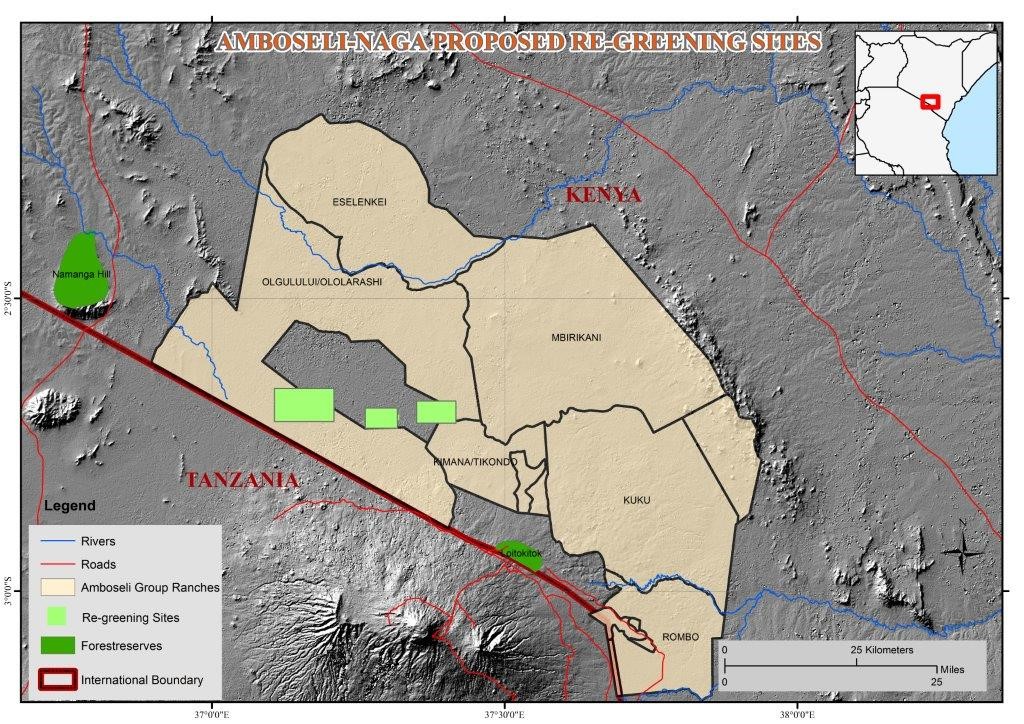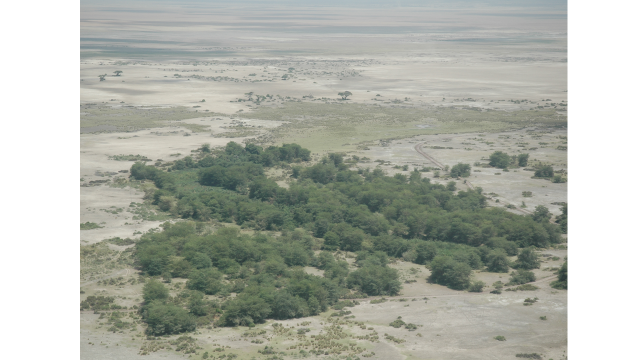ACP teamed up with the Amboseli Ecosystem Trust, Kenya Wildlife Service, the African Conservation Centre and Big Life in winning support from the NAGA Foundation to restore fever tree and tortilis woodland in and around Amboseli National Park damaged by many years of heavy elephant concentration. The program will also restore pastures damaged around permanent livestock settlements by setting a series of traditional olopololi, calf grazing areas protected by thorn fencing.
The start-up funding in the first year will cover the cost of setting up and monitoring three high-level electric fences that exclude only elephants, allowing seedlings held in check by heavy browsing to mature and regenerate the once abundant woodlands of Amboseli. More details of the restoration program will be posted shortly.


ACP teamed up with the Amboseli Ecosystem Trust, Kenya Wildlife Service, the African Conservation Centre and Big Life in winning support from the NAGA Foundation to restore fever tree and tortilis woodland in and around Amboseli National Park damaged by many years of heavy elephant concentration. The program will also restore pastures damaged around permanent livestock settlements by setting a series of traditional olopololi, calf grazing areas protected by thorn fencing.
The start-up funding in the first year will cover the cost of setting up and monitoring three high-level electric fences that exclude only elephants, allowing seedlings held in check by heavy browsing to mature and regenerate the once abundant woodlands of Amboseli. More details of the restoration program will be posted shortly.


ACP teamed up with the Amboseli Ecosystem Trust, Kenya Wildlife Service, the African Conservation Centre and Big Life in winning support from the NAGA Foundation to restore fever tree and tortilis woodland in and around Amboseli National Park damaged by many years of heavy elephant concentration. The program will also restore pastures damaged around permanent livestock settlements by setting a series of traditional olopololi, calf grazing areas protected by thorn fencing.
The start-up funding in the first year will cover the cost of setting up and monitoring three high-level electric fences that exclude only elephants, allowing seedlings held in check by heavy browsing to mature and regenerate the once abundant woodlands of Amboseli. More details of the restoration program will be posted shortly.


ACP teamed up with the Amboseli Ecosystem Trust, Kenya Wildlife Service, the African Conservation Centre and Big Life in winning support from the NAGA Foundation to restore fever tree and tortilis woodland in and around Amboseli National Park damaged by many years of heavy elephant concentration. The program will also restore pastures damaged around permanent livestock settlements by setting a series of traditional olopololi, calf grazing areas protected by thorn fencing.
The start-up funding in the first year will cover the cost of setting up and monitoring three high-level electric fences that exclude only elephants, allowing seedlings held in check by heavy browsing to mature and regenerate the once abundant woodlands of Amboseli. More details of the restoration program will be posted shortly.


Amboseli Conservation Program
P.O Box 15289-00509 or 62844-00200
Nairobi, Kenya.
Tel/Fax: +254 20 891360 / 891751
Email: acc@acc.or.ke